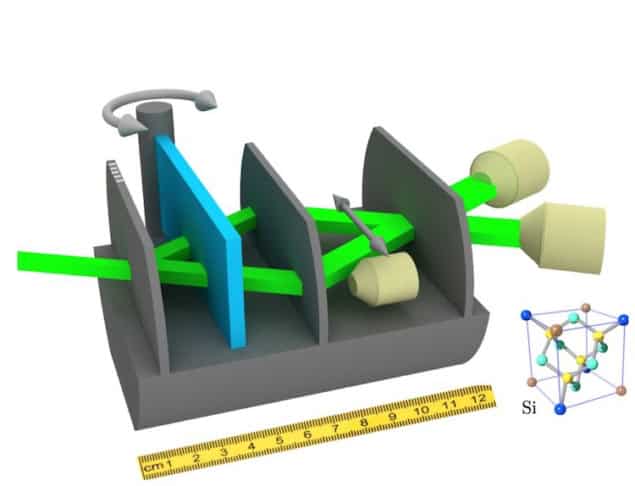
Is the behaviour of quantum objects described by a simple, classical theory? Or can particles really be in a superposition of different places at once, as quantum theory suggests? In 1985, the physicists Antony James Leggett and Anupam Garg proposed a new way of answering these questions. If the world can be described by a theory that doesn’t feature superposition and other quantum phenomena, Leggett and Garg showed that a certain inequality must be obeyed. If the world really is quantum, though, the inequality will be violated.
Researchers at TU Wien in Austria have now made a new measurement of this so-called Leggett-Garg inequality (LGI) using neutron interferometry. Their verdict is clear: no classical macroscopic theory can truly describe reality. The work also provides further proof that a particle can be in a superposition of two states associated with different locations – even when these locations are centimetres apart.
Correlation strengths
The LGI is conceptually similar to the better-known Bell’s inequality, which describes how the behaviour of one object relates to that of another object with which it is entangled. The LGI, however, describes how the state of a single object varies at different points in time.
Leggett and Garg assumed that the object in question can be measured at different moments. Each of these measurements must yield one of two possible results. It is then possible to perform a statistical analysis of how strongly the results at the different moments correlate with each other, even without knowing how the object’s actual state changes over time.
If the theory of classical realism holds, Leggett and Garg showed that the degree of these correlations cannot exceed a certain level. Specifically, for a set of three measurements, the quantity K ≡ C21 + C32 – C31 (where C is a correlation function, and the indices denote the different measurements) must be less than 1. If, on the other hand, the object obeys the rules of quantum theory, K will be greater than 1.
Enter neutron beams
Previous experiments have already demonstrated LGI violations in several quantum systems, including photonic qubits, nuclear spins in diamond defect centres, superconducting qubits and impurities in silicon. Still, team member Hartmut Lemmel says the new measurement offers certain advantages.
“Neutron beams, as we use them in a neutron interferometer, are perfect,” says Lemmel, who oversees the S18 instrument at the Institut Laue-Langevin (ILL) in Grenoble, France, where the experiment was carried out. A neutron interferometer, he explains, is a silicon-based crystal interferometer in which an incident neutron beam is split into two partial beams at a crystal plate and then recombined by another piece of silicon. This configuration means there are three distinct regions in which the neutrons’ locations can be measured: in front, inside and behind the interferometer.
“The actual measurement of the two-level system’s state probes the presence of the neutron in two particular regions of the interferometer, which is usually referred to as a ‘which-way’ measurement,” explains team member Stephan Sponar, a postdoctoral researcher at TU Wien. “So as not to disturb the time evolution of the system, our measurement probes the absence rather than the presence of the neutron in the interferometer. This is called an ideal negative measurement.”
The fact that the two partial beams are several centimetres apart is also beneficial, adds Niels Geerits, a PhD student in the team. “In a sense, we are dealing with a quantum object that is huge by quantum standards,” he says.
Leggett-Garg inequality is violated
After combining several neutron measurements, the TU Wien team showed that the LGI is indeed violated, with the final measured value of the Leggett–Garg correlator K equal to 1.120 ± 0.026.

Protocol could make it easier to test the quantum nature of large objects
“Our obtained result cannot be explained within the framework of macro-realistic theories, only by quantum theory,” Sponar tells Physics World. One consequence, Sponar continues, is that the idea that “maybe the neutron is only travelling on one of the two paths, we just don’t know which one” cannot be true. There is, he says, “no time inside the interferometer [when] the system (neutron) is in a ‘given state’, that is, either in path 1 or in path 2”.
Instead, he concludes, the neutron must be in a coherent superposition of system states – a fundamental property of quantum mechanics.
The experiment is detailed in Physical Review Letters.



